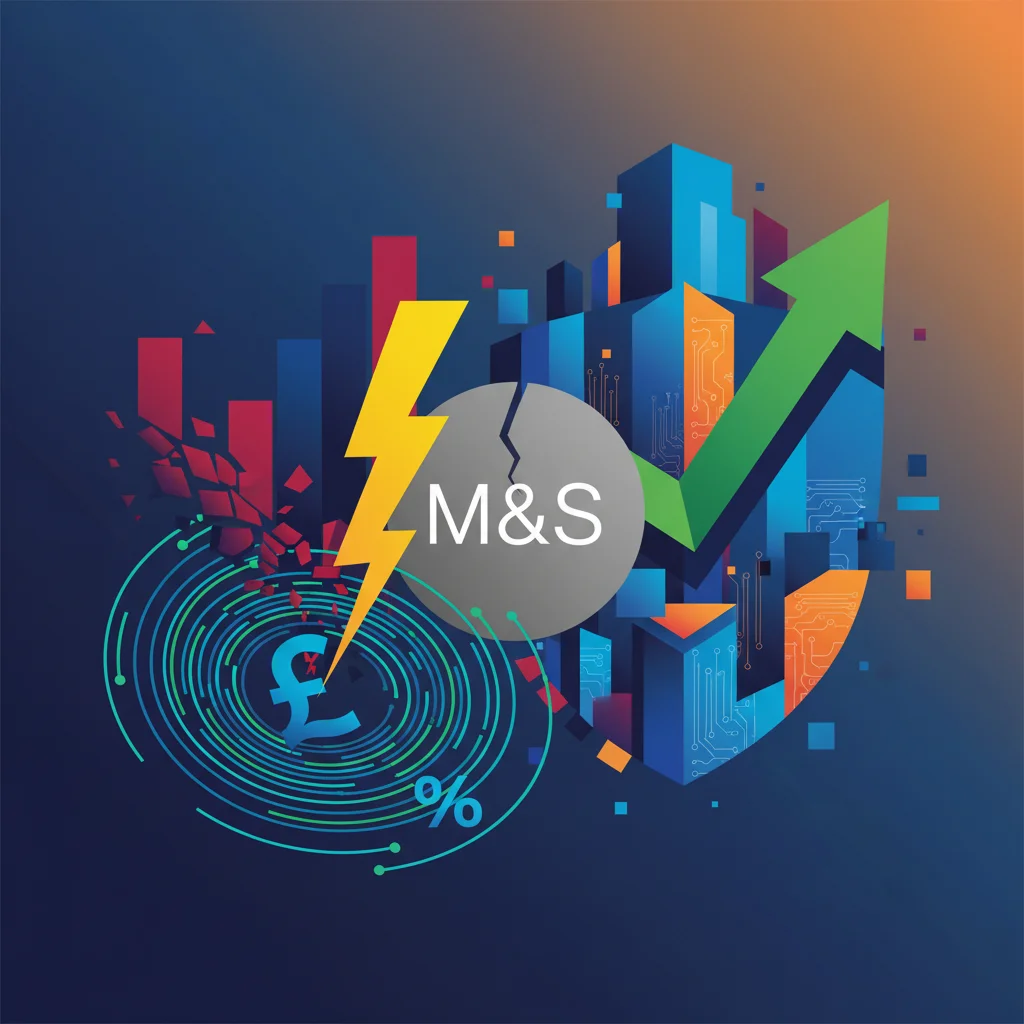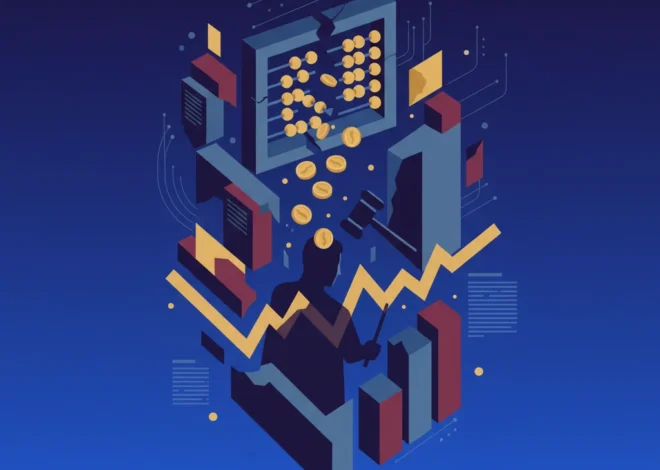
The £101 Million Wake-Up Call: How a Cyber Attack Halved M&S Profits and Redefined Investor Risk
In the world of finance and investing, risk is a constant companion. Investors meticulously analyze balance sheets, market trends, and economic forecasts. Yet, a new, often invisible, threat is increasingly capable of wiping out millions in value overnight. For British retail giant Marks & Spencer (M&S), this threat materialized in a devastating cyber attack, a digital blitz that cost the company a staggering £101 million and effectively halved its profits. This incident is more than just a headline; it’s a stark case study on the modern intersection of technology, finance, and corporate vulnerability, offering critical lessons for business leaders, finance professionals, and anyone navigating the stock market today.
Deconstructing a Nine-Figure Digital Disaster
When a company reports a £101 million loss from a single event, the natural question is: where did all that money go? A cyber attack’s financial toll extends far beyond a simple IT fix. It’s a multi-faceted crisis that permeates every layer of the business, from the shop floor to the boardroom. While M&S has not detailed the exact nature of the attack, events of this scale typically involve a cascade of direct and indirect costs that cripple operations and erode value.
The immediate impact is often the most visible: lost sales. The attack disrupted both online and in-store operations, meaning customers were unable to purchase goods, and revenue streams were instantly choked off. But this is just the tip of the iceberg. The true cost of a cyber incident is a complex financial equation that includes:
- Business Disruption: This is the largest component, encompassing lost revenue from downtime, the cost of operational recovery, and the immense human effort required to bring systems back online.
- Technical Remediation: The direct costs of fighting the fire, including hiring cybersecurity experts for digital forensics, eradicating malware, rebuilding secure networks, and patching vulnerabilities.
- Regulatory and Legal Fallout: In an era of stringent data protection laws like GDPR, a breach can trigger massive fines, legal fees from litigation, and the costs of providing credit monitoring services to affected customers.
- Reputational Damage: Perhaps the most insidious cost is the erosion of customer trust. A brand’s reputation is a priceless asset, and a failure to protect customer data can lead to long-term brand abandonment, impacting future earnings and stock market valuation.
To put the M&S incident into a broader context, let’s examine the typical cost components of a major data breach, based on industry-wide analysis. The figures below illustrate how quickly the expenses can accumulate, turning a technical problem into a corporate catastrophe.
| Cost Category | Description of Expenses | Estimated Impact on a Major Retailer |
|---|---|---|
| Detection & Escalation | Forensic investigations, assessment and audit services, crisis management, and internal communications. | 10-15% of total cost |
| Notification & Response | Costs of notifying regulators and affected customers, legal counsel, public relations campaigns, and setting up helpdesks. | 5-10% of total cost |
| Post-Breach Response | Credit monitoring for customers, identity theft protection services, and discounts to win back trust. | 15-20% of total cost |
| Lost Business | Revenue lost due to system downtime, customer churn, and long-term reputational damage leading to diminished acquisition. This is the largest single cost. | 40-50% of total cost |
Data synthesized from industry reports like IBM’s Cost of a Data Breach study.
This breakdown demonstrates that the initial attack is just the beginning. The financial haemorrhaging continues long after the systems are restored, impacting the company’s position in the fiercely competitive retail landscape. For a legacy brand like M&S, which has been investing heavily in its digital transformation, such an event is a particularly painful setback.
UK at a Crossroads: Fix Systemic R&D or Forfeit Economic Superpower Status?
The Stock Market’s Verdict: Cyber Risk is a Core Financial Metric
For investors, the M&S cyber attack serves as a crucial reminder that a company’s digital defenses are as important as its financial statements. In today’s market, cybersecurity posture is no longer a niche IT concern; it is a fundamental indicator of operational resilience and good governance. The immediate reaction on the stock market to such news is often swift and unforgiving. A company’s share price can plummet as investors re-evaluate its risk profile and future earnings potential.
The impact on trading and investor sentiment can be broken down into several key areas:
- Erosion of Market Capitalization: The announcement of a significant breach often leads to an immediate sell-off, wiping millions or even billions off a company’s valuation.
- Revised Analyst Ratings: Financial analysts will quickly downgrade a stock, citing increased uncertainty, potential for future costs, and a lack of confidence in management’s ability to mitigate risk.
- Increased Cost of Capital: A company perceived as having weak security may find it harder and more expensive to raise capital in the future, as lenders and investors demand higher returns to compensate for the elevated risk.
- Scrutiny of Leadership: The board and executive team come under intense pressure. Questions about their oversight, investment in security, and crisis response plan can lead to leadership changes, further destabilizing the company.
This incident underscores a paradigm shift in how we approach investing. A thorough due diligence process must now include an assessment of a company’s exposure to cyber threats. Investors and finance professionals must ask critical questions: Does the company disclose its cybersecurity strategy? Is there board-level oversight of cyber risk? What is the company’s track record, and what investments are being made in its digital immune system? Ignoring these questions is akin to ignoring a company’s debt-to-equity ratio—it’s a failure to see a critical piece of the financial puzzle.
A Systemic Threat to the Broader Economy and Financial Ecosystem
While the focus is on M&S, the implications of this attack ripple outwards, touching the entire retail sector, its banking partners, and the wider economy. Modern commerce is a deeply interconnected ecosystem, powered by a complex web of financial technology (fintech) and data-sharing partnerships. A breach at one major retailer can expose vulnerabilities across the chain.
Consider the network of systems involved in a single transaction: point-of-sale terminals, payment processors, inventory management systems, customer loyalty databases, and e-commerce platforms. Many of these services are provided by third-party fintech companies. A successful attack can serve as a blueprint for cybercriminals to target other retailers using similar technology, creating a domino effect. This is where the conversation expands from a single company’s finance to the stability of the broader economic infrastructure.
The increasing reliance on sophisticated financial technology, while driving efficiency, also expands the potential “attack surface” for bad actors. As banking and retail become more integrated through digital platforms, the lines blur, and a threat to one can quickly become a threat to the other. This incident will undoubtedly force a sector-wide review of third-party vendor security and the resilience of our shared digital payment and data systems. In macro terms, the economics are clear: widespread disruption to a sector as large as retail can dampen consumer confidence, reduce spending, and have a measurable negative impact on GDP. According to a report from the Center for Strategic and International Studies (CSIS), cybercrime costs the global economy hundreds of billions of dollars annually, acting as a significant drag on innovation and growth (source).
The Future of Corporate Defense: Investing in Digital Fortresses
So, what is the path forward? The M&S case is a lesson in the high cost of reactive security. The future of corporate defense lies in a proactive, multi-layered, and board-driven strategy. Companies must move beyond viewing cybersecurity as a purely technical problem and embrace it as a core business function.
Modern defense strategies include:
- Zero-Trust Architecture: An approach that assumes no user or device is inherently trustworthy. It requires strict verification for every person and device trying to access resources on the network, regardless of their location.
- AI-Powered Threat Detection: Using machine learning algorithms to analyze network traffic and identify anomalous patterns in real-time, allowing for the detection of threats before they can execute.
- Employee Education: Acknowledging that humans are often the weakest link. Regular, sophisticated training on phishing, social engineering, and security best practices is one of the most cost-effective defenses.
- Immutable Ledgers: For certain high-value data, technologies like blockchain are being explored to create tamper-proof records of transactions and data access, enhancing integrity and auditability within the financial technology stack.
- Resilience and Recovery Planning: Accepting that a breach is not a matter of “if” but “when.” The focus must be on robust, tested incident response and disaster recovery plans that allow the business to get back on its feet quickly and minimize financial damage.
More Than a Scoop: The Financial and Economic Implications of Ben & Jerry's Activist Brand
The economics of this new reality are compelling. The investment required to build a resilient digital fortress is a fraction of the potential cost of a single major breach. For every pound or dollar spent on proactive security, the potential return on investment, measured in averted losses, is monumental.
Conclusion: From Balance Sheets to Digital Battlefields
The £101 million blow to Marks & Spencer is a story of our time. It’s a stark illustration that the front lines of business are no longer just in the marketplace but also in the digital ether. For investors, the definition of a “strong” company must now include digital resilience. For business leaders, the message is unequivocal: cyber risk is enterprise risk. It impacts finance, operations, reputation, and ultimately, survival.
As we move forward, the companies that thrive will be those that treat cybersecurity not as a compliance checkbox but as a strategic imperative. They will be the ones whose boards are as fluent in the language of cyber risk as they are in profit and loss. The M&S incident, as costly as it was, provides an invaluable lesson for the entire market: in the 21st-century economy, the strongest balance sheets are protected by the strongest digital defenses.


